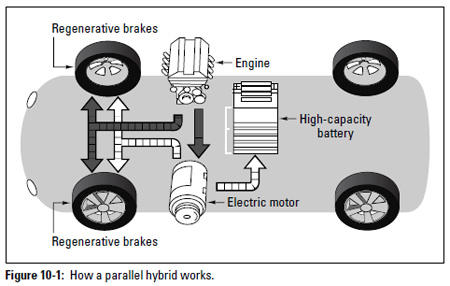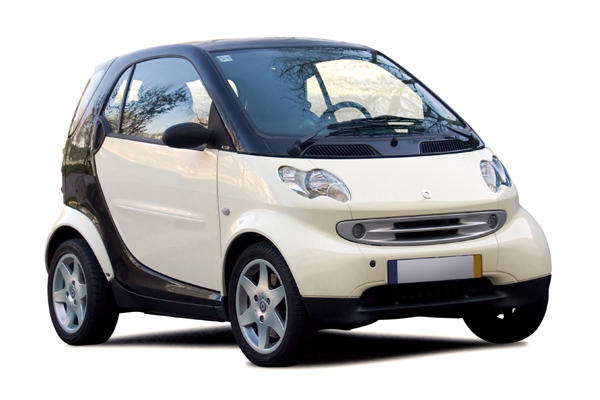Flex-fuel Vehicles
Vehicles that can run on two or more types of fuel are called flex-fuel vehicles (FFVs). (They're also known as dual-fuel or multi-fuel vehicles.) The most popular FFVs can run on either gasoline or ethanol or a mixture of the two. At least one major carmaker has a test fleet of vehicles that burn liquid hydrogen but can switch to gasoline if there's no hydrogen to be found. Many people drive FFVs and don't even know it! If you'd like to know whether your vehicle is an FFV, check your owner's manual, look for a sticker inside the little door you open to add fuel, call your dealership, or go to www.fueleconomy.gov, which has a list of available flex-fuel vehicles.
Hybrids
Hybrid vehicles are called hybrids because they utilize both a small internal combustion engine (ICE) and an electric motor to obtain maximum power and fuel economy with minimum emissions. How they do this varies from one model to another, with varying success. What all hybrids have in common is the ability to generate electric current, store it in a large battery, and use that current to help drive the car. This is usually done in two ways: Hybridscan capture electrical energy produced by a regenerative braking system (described later in this chapter), and their engines can power a generator, too.Hybrids can also conserve energy by shutting down the ICE when the vehicle isin Park, idling at a light, or stopped in traffic; or when the electric motor'senergy is sufficient to drive the vehicle without assistance from the ICE.
Parallel Hybrids
A parallel hybrid (see Figure 10-1) uses both an electric motor and an internal combustion engine (ICE) for propulsion. They can run in tandem, or one can be used as the primary power source with the other kicking in to assist when extra power is needed for starting off, climbing hills, and accelerating to pass other vehicles. Because both are connected to the drive train, they're said to run "in parallel."

The Toyota Prius uses a power split device that connects the ICE, the electric motor and the continuously variable transmission (CVT). It allows the engine and the motor to operate together or separately, and enables either one to generate power for storage or immediate use. It's basically a parallel hybrid, but because of this unique feature, Toyota refers to it as a "series/parallel hybrid." I drive a Prius (named Esmerelda) so here's as an example of how this type of parallel hybrid works:
- When you press the ignition button, the electric motor uses energy stored in the high-voltage battery to start the car. (A 12-volt battery under the hood supplies power for lights, radio, and so on, as in conventional vehicles.)
- Whenever the high-voltage battery needs charging, the ICE starts up to generate electricity for it, and once the vehicle is moving faster than around 15 mph, the ICE kicks in to provide additional power for accelerating, driving at high speeds, and going up hills.
- When you step on the brakes, the regenerative braking system generates electricity to power the vehicle or be stored in the high-voltage battery.
- When the vehicle stops, the ICE shuts off automatically so you don't waste fuel. Even though you're sitting there in a silent car, the radio, air conditioner, windshield wipers, and other electric features continue to work uninterrupted!
From Auto Repair for Dummies, copyright © 2009 by Wiley Publishing, Inc., Indianapolis, Indiana. Used by arrangement with John Wiley & Sons, Inc.










